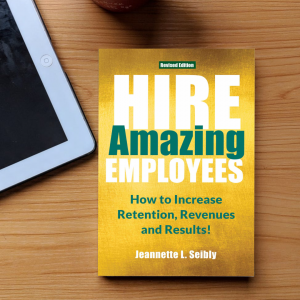
As 2025 winds down, every company is asking the same question: are we truly on track for a profitable finish? Some will succeed. Many won’t. And whether you’re ready or not, 2026 is around the corner.
Beyond sales and profitability numbers, objective data is scarce. Too often, we lean on excuses: Why someone couldn’t follow through, or stories like, “our top customer has been out of the country for six months.” We downplay lackluster results and cling to hope. But hope is not a strategy.
In 2026, let’s replace hope with hard data. Let’s turn numbers into strategies, and strategies into results so by year’s end, you don’t just meet your projections, you surpass them.
7 Tips to Achieve Real Results
1. Hire the Right People. Not everyone can sell your products or services, no matter what they’ve sold before. As the old saying goes, “Just because they can sell Cadillacs in Boston doesn’t mean they can sell Lincolns in Denver.” The key is to get real about who you hire and get real data about their natural ability to prospect, persist, and close. Use a qualified job-fit sales assessment that provides consistent, objective data.
- Low assertiveness: A candidate who is “too nice” may build rapport but struggle to ask for the sale.
- Team-dependent: Someone who thrives only in group settings may falter when left to hunt alone.
- Mismatch of style: A polished corporate seller may not adapt well to scrappy startup environments.
2. Coach with Laser-Focused Accuracy. The right job fit assessment also sharpens your coaching. (SEE Chapter 9, Hire Amazing Employees) Address the real “why” behind a salesperson’s struggles. For instance, telling a rep to meet more people when they already have plenty of contacts won’t help. Instead, coach them on how to engage those contacts and uncover buying interest.
3. Stop Relying on Technology to Fix Sales Performance. A new CRM or AI tool won’t magically improve results. These are tools, not producers. Without the right salespeople, technology only makes things worse. Low performers hide behind learning systems, while high performers resent being slowed down from meeting prospects and closing deals.
4. Engage Customers Every Quarter. Quarterly engagement keeps customers loyal and more likely to refer you. Use a scorecard to focus conversations on quality, service, and pricing, and how you can help them in the future. Training is essential to make these discussions effective.
5. Hold Daily Sales Team Huddles. If you’re not already doing this, start now. A 10- to 20-minute STAND-UP HUDDLE each morning keeps everyone accountable. Standing shortens the meetings and makes it harder for low performers to hide. Focus on progress and needed adjustments. Don’t let excuses derail creativity and sales results.
6. Train for the Details. Years ago, a sales expert told me: successful salespeople know the details of their products and services. That wisdom made a huge difference in my own results. Provide weekly training, updates, and stories. And remember, repetition works.
7. Acknowledge Results. Recognition works wonders. Acknowledge individuals and your team by sharing brags. Use a dashboard to show weekly results. This builds support when someone is stuck and motivates everyone to do more of what’s working.
©Jeannette Seibly, 2019-2025
 Jeannette Seibly, an award-winning Talent Advisor, Leadership Results Coach, and Business Author, has guided thousands of executives and business leaders to achieve remarkable success over the past 33 years. Her specialty is delivering innovative solutions for hiring, coaching, and leadership challenges—with excellence and accountability at the core.
Jeannette Seibly, an award-winning Talent Advisor, Leadership Results Coach, and Business Author, has guided thousands of executives and business leaders to achieve remarkable success over the past 33 years. Her specialty is delivering innovative solutions for hiring, coaching, and leadership challenges—with excellence and accountability at the core.
Want objective, real-world data on your sales team? Contact me today to find out how.






 Jeannette Seibly, an award-winning Talent Advisor, Leadership Results Coach, and Business Author, has guided thousands of executives and business leaders to achieve remarkable success over the past 33 years. Her specialty is delivering innovative solutions for hiring, coaching, and leadership challenges—with excellence and accountability at the core.
Jeannette Seibly, an award-winning Talent Advisor, Leadership Results Coach, and Business Author, has guided thousands of executives and business leaders to achieve remarkable success over the past 33 years. Her specialty is delivering innovative solutions for hiring, coaching, and leadership challenges—with excellence and accountability at the core. 

 Remember, use a
Remember, use a  Jeannette Seibly, an award-winning Talent Advisor, Leadership Results Coach, and Business Author, has guided thousands of executives and business leaders to achieve remarkable success over the past 33 years. Her specialty is delivering innovative solutions for hiring, coaching, and leadership challenges—with excellence and accountability at the core.
Jeannette Seibly, an award-winning Talent Advisor, Leadership Results Coach, and Business Author, has guided thousands of executives and business leaders to achieve remarkable success over the past 33 years. Her specialty is delivering innovative solutions for hiring, coaching, and leadership challenges—with excellence and accountability at the core.